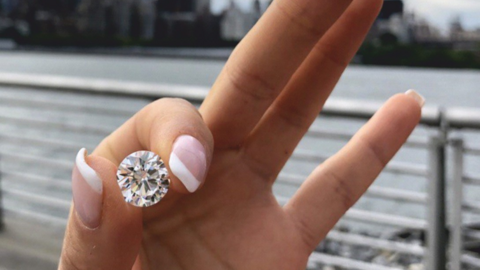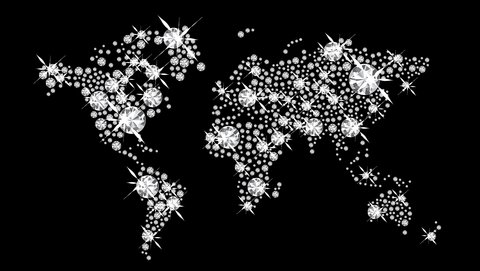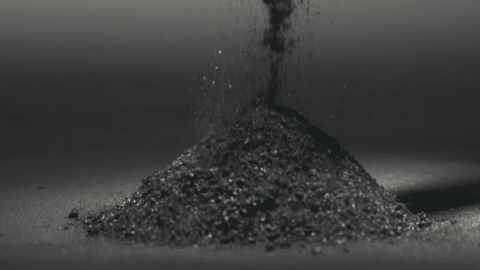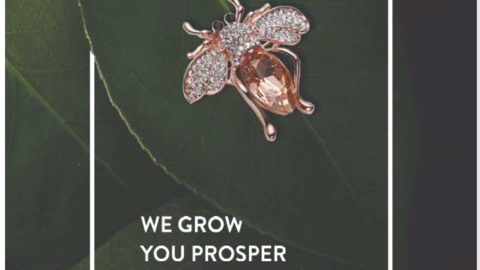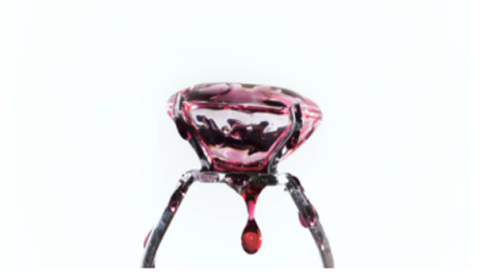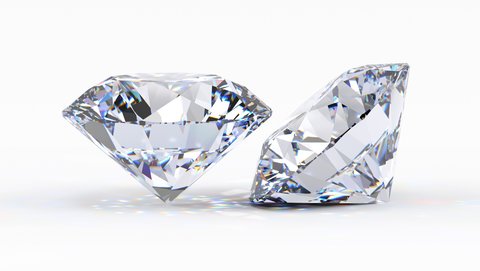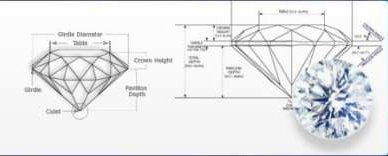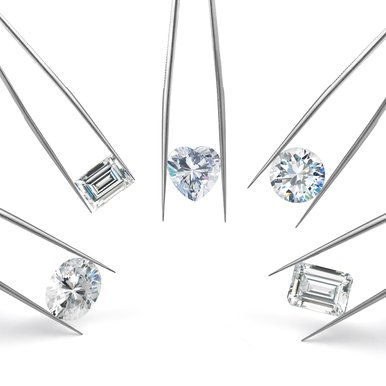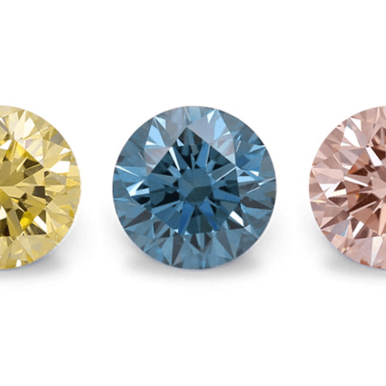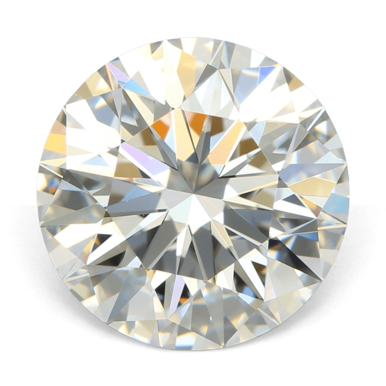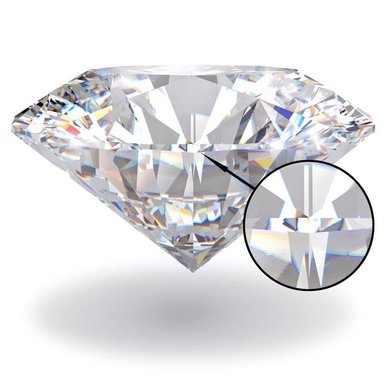G Color Lab-Grown Diamonds
Introduction to G Color Lab Grown Diamonds
When searching for the perfect diamond, color grade plays a crucial role in both appearance and value. G color diamonds represent the highest grade in the "near colorless" category on the Gemological Institute of America (GIA) scale, offering a brilliant, virtually colorless appearance that captivates the eye. These diamonds have gained immense popularity among discerning buyers who recognize their exceptional balance of visual appeal and value.
In recent years, lab grown diamonds have revolutionized the jewelry industry, providing an ethical and sustainable alternative to mined stones. These technological marvels are identical to natural diamonds in every way - physically, chemically, and optically - but are created in controlled laboratory environments. G color lab grown diamonds, in particular, have emerged as a favorite choice for engagement rings and fine jewelry, offering the perfect combination of quality, beauty, and affordability.
What Are Lab Grown Diamonds?
Lab grown diamonds represent one of the most remarkable achievements in modern gemology. Unlike imitation diamonds such as cubic zirconia or moissanite, these are genuine diamonds created in controlled laboratory environments rather than mined from the earth. The science behind these gems is both fascinating and precise, employing two primary methods of creation.
The first method, High Pressure High Temperature (HPHT), replicates the natural conditions under which diamonds form deep within the Earth. This process subjects a small diamond seed to extreme pressure (approximately 1.5 million pounds per square inch) and temperatures exceeding 2,700°F, causing carbon atoms to crystallize around the seed, gradually building a diamond.
The second method, Chemical Vapor Deposition (CVD), is more recent and involves placing a thin diamond seed in a sealed chamber filled with carbon-rich gas. When this gas is energized, carbon atoms separate from the gas and layer by layer, accumulate on the diamond seed, forming a larger diamond crystal over time.
The result of both processes is a real diamond that is physically, chemically, and optically identical to its mined counterpart. Even expert gemologists require specialized equipment to distinguish between lab grown and natural diamonds, as they possess the same hardness (10 on the Mohs scale), refractive properties, and chemical composition (pure carbon in a crystalline structure).
The advantages of choosing lab grown diamonds extend beyond their technical equivalence. They are ethically sourced, completely eliminating concerns about conflict diamonds or mining practices that harm communities or exploit workers. From an environmental perspective, lab grown diamonds require significantly less energy and resources to produce, with some estimates suggesting they have up to 95% less impact on the environment than mining operations.
Perhaps most appealing to consumers is the substantial cost savings - lab grown diamonds typically cost 30-40% less than natural diamonds of equivalent size and quality, allowing buyers to select larger, higher-quality stones within their budget.
Understanding Diamond Color and the GIA Scale
When evaluating a diamond's quality, color (or rather, the absence of it) is one of the four critical factors—alongside cut, clarity, and carat weight—that determine its value and beauty. The Gemological Institute of America (GIA), the world's foremost authority on diamond grading, established a comprehensive color scale that has become the industry standard worldwide.
The GIA diamond color scale ranges from D to Z, with D representing completely colorless diamonds and Z indicating diamonds with noticeable yellow or brown tints. This scale is divided into four main categories: Colorless (D, E, F), Near Colorless (G, H, I, J), Faint Yellow (K, L, M), and Very Light to Light Yellow (N through Z).
G color diamonds stand at the threshold of the Near Colorless category, representing the highest grade within this classification. To the untrained eye, G color diamonds appear virtually colorless, especially when set in jewelry. Only when placed beside a higher color grade diamond (D-F) and examined by a trained gemologist under controlled lighting conditions can subtle differences be detected.
The color assessment process itself is remarkably precise and controlled. Expert gemologists examine loose diamonds face-down on a white background under specific lighting conditions, comparing them to master stones of known color grades. This meticulous process ensures consistency and accuracy in color grading across the industry.
G color has emerged as a popular choice among consumers for several compelling reasons. It offers an excellent balance between visual quality and value, providing a diamond that appears colorless in most settings without the premium price of D-F diamonds. For engagement rings and other fine jewelry, G color diamonds deliver exceptional brilliance and fire while maximizing budget efficiency. This strategic position on the color scale makes G color lab grown diamonds particularly appealing to buyers seeking the perfect combination of quality and value.
Unique Features of G Color Lab Grown Diamonds
G color lab grown diamonds possess a distinctive set of characteristics that make them increasingly popular among discerning buyers seeking exceptional quality without paying premium prices. These gems occupy a sweet spot in the diamond market, offering a remarkable combination of beauty, brilliance, and value.
The most notable feature of G color diamonds is their near-colorless appearance. To the naked eye, these diamonds appear virtually colorless in most settings and lighting conditions. Only under specific controlled lighting and when compared directly to higher color grades by a trained gemologist can the very slight warmth be detected. This almost imperceptible warmth actually creates a versatility that makes G color diamonds compatible with a wide range of jewelry styles and settings.
When created in laboratory environments, G color diamonds benefit from controlled growth conditions that can result in exceptional clarity and consistency. Advanced technology allows for precise monitoring during the growth process, which can minimize inclusions and structural imperfections. Additionally, lab grown diamonds are often available with excellent cut grades, as cutters can maximize the rough diamond material without concerns about preserving carat weight that sometimes influence decisions with natural diamonds.
The optical properties of G color lab grown diamonds are particularly impressive. They exhibit outstanding light performance, with exceptional brilliance (white light reflection), fire (colored light dispersion), and scintillation (the sparkle and pattern of light and dark areas). The slight warmth in G color diamonds can sometimes enhance these properties in certain lighting conditions, creating a distinctive sparkle that many find appealing.
For engagement rings and statement jewelry pieces, G color lab grown diamonds offer substantial advantages. Their near-colorless appearance ensures they look stunning in white gold, platinum, and rose gold settings alike. Their brightness and brilliance create eye-catching jewelry that stands out while maintaining the ethical and environmental benefits inherent to lab grown diamonds.
Perhaps most importantly, G color lab grown diamonds represent an excellent value proposition. They provide nearly the same visual appeal as the higher D-F color grades but at significantly lower prices, allowing buyers to either save money or invest in a larger stone, better cut, or higher clarity for the same budget.
G Color vs Other Diamond Colors (D, E, F, H, I, etc.)
The diamond color scale is nuanced, with each grade offering distinct characteristics and value propositions. Understanding how G color compares to other grades helps buyers make informed decisions based on their preferences and budget.
When comparing G color to the colorless category (D, E, and F), the differences are subtle but worth noting. D color diamonds, the highest grade possible, are exceptionally rare and completely colorless. E and F grades are also considered colorless, though with marginally detectable warmth under expert examination. In practical terms, G color diamonds appear virtually identical to these higher grades when set in jewelry and viewed with the naked eye. The key difference lies in price—G color lab grown diamonds typically cost 15-25% less than comparable D color stones, making them an intelligent investment.
Moving down the scale to compare G with H, I, and J colors (also in the near-colorless range), the distinctions become more noticeable. H color diamonds display a very slight warmth that may be detectable in larger stones (over 1.5 carats) or certain settings. I and J colors exhibit progressively more noticeable warmth, particularly in step-cut shapes like emerald or asscher cuts where color is more evident. G color provides a crisper, whiter appearance compared to these lower grades, especially in round brilliant cuts where facet patterns can help mask slight color.
The following comparison table illustrates the key differences:
G Color vs Other Diamond Colors Comparison
| Color Grade | Category | Appearance | Best Setting | Value Proposition |
|---|---|---|---|---|
| D, E, F | Colorless | Absolutely colorless, even under magnification | Platinum, white gold | Premium price for perfectionist buyers |
| G | Near Colorless | Appears colorless to naked eye, very slight warmth under 10x magnification | Platinum, white gold, rose gold | Best balance of quality and value |
| H, I | Near Colorless | Slight warmth detectable in larger stones or step cuts | White gold, rose gold, yellow gold | Good value for budget-conscious buyers |
| J, K | Near Colorless to Faint Color | Noticeable warmth, especially in larger stones | Yellow gold, rose gold | Budget-friendly option |
Shape can also influence how color appears. Round brilliant cuts mask color better than emerald, asscher, or princess cuts due to their facet patterns. For step cuts and elongated shapes, selecting a G color becomes even more beneficial, as it provides the crisp look desired in these styles without the premium price of D-F colors.
For lab grown diamonds specifically, the color grading follows identical standards to natural diamonds, ensuring consistent quality assessment. This makes G color lab grown diamonds an exceptional value investment for those seeking the perfect balance between quality and price.
Price, Value, and Investment Potential
G color lab grown diamonds represent a compelling value proposition in today's diamond market, offering exceptional quality at significantly lower prices compared to their natural counterparts and higher color grades. Understanding the economics behind these gems helps buyers make informed investment decisions.
The price advantage of G color lab grown diamonds is substantial on multiple fronts. Compared to natural G color diamonds of equivalent size and quality, lab grown versions typically cost 30-40% less. This dramatic price difference stems from the streamlined production process that bypasses expensive mining operations. When compared to colorless (D-F) lab grown diamonds, G color stones offer additional savings of approximately 15-20%, while still providing a virtually colorless appearance in most settings.
This price efficiency creates a remarkable opportunity for consumers to maximize their budget. Many buyers choose to invest the savings in a larger carat weight, superior cut quality, or higher clarity grade—all factors that can significantly enhance a diamond's visual impact. For example, the budget for a 1-carat D color lab grown diamond might instead purchase a 1.3-carat G color lab grown diamond with identical clarity and cut grades, resulting in a noticeably larger and equally beautiful stone.
Regarding investment value, it's important to note that lab grown diamonds follow different market dynamics than natural diamonds. While natural diamonds have historically maintained certain resale value (though typically at significant discounts to retail price), lab grown diamonds should primarily be viewed as consumer goods rather than financial investments. As manufacturing technology continues to improve, production costs may decrease over time, potentially affecting long-term value.
However, the immediate value proposition remains undeniable—G color lab grown diamonds deliver exceptional beauty, quality, and ethical benefits at prices that make luxury diamond jewelry accessible to a wider audience. For engagement rings and special occasion jewelry meant to be cherished for a lifetime, the initial savings and superior quality-to-price ratio make G color lab grown diamonds an intelligent choice for value-conscious consumers.
Choosing the Right Clarity and Cut for G Color Lab Grown Diamonds
When selecting a G color lab grown diamond, understanding how clarity and cut interact with color grade is essential for achieving the most beautiful and valuable stone within your budget. These three factors work together synergistically, with the right balance creating exceptional visual appeal.
Cut quality is arguably the most crucial factor for G color diamonds. An excellent cut maximizes a diamond's light performance, creating brilliance and sparkle that can actually make a diamond appear whiter than its color grade suggests. For G color lab grown diamonds, prioritizing an excellent or ideal cut grade ensures that the stone's slight warmth is minimized while its light-reflecting properties are enhanced.
Round brilliant cuts are particularly complementary to G color diamonds, as their 57-58 facet pattern expertly disperses light, making any subtle color virtually imperceptible. However, other shapes can also be stunning choices. Oval, cushion, and pear shapes work beautifully with G color, while more color-sensitive cuts like emerald, asscher, and princess will still appear white but may benefit from slightly higher settings to enhance their appearance.
For clarity, G color lab grown diamonds offer flexibility in selection. Since lab grown diamonds typically have excellent clarity profiles due to their controlled growth environment, many buyers can comfortably choose VS1 or VS2 clarity grades (Very Slightly Included) without any visible imperfections to the naked eye. For larger stones (over 1.5 carats) or step-cut shapes where inclusions are more visible, moving up to VVS2 or VVS1 (Very, Very Slightly Included) may be beneficial, though still more affordable than comparable natural diamonds.
When balancing the "Four Cs" (cut, color, clarity, and carat), remember this guiding principle for G color diamonds: prioritize cut quality first, then consider the size (carat) you desire, and finally select an appropriate clarity grade that ensures no visible imperfections. This strategy maximizes visual impact while optimizing value.
Lab grown diamonds particularly excel in this balancing act, as their price advantage allows buyers to prioritize excellent cut grades and appropriate clarity without sacrificing size. A well-cut G color lab grown diamond with VS clarity will outshine a poorly cut colorless diamond in real-world settings, providing both better value and superior beauty.
Lab-Grown D Color Diamonds Collection
| SHAPE | CARAT | CUT | COLOR | CLARITY |
|---|
Register on our website to gain access to our complete diamond database.
Sign up7. How to Evaluate and Buy D Color Diamonds
While color is a crucial factor in diamond selection, other characteristics are equally important in determining a diamond's overall beauty and value. When evaluating D color lab-grown diamonds, consider these key factors alongside color:
The Importance of Cut and Clarity
A D color diamond with poor cut quality won't display the brilliance and fire that make diamonds so captivating. In fact, an excellently cut G color diamond will often appear more beautiful than a poorly cut D color stone. For maximum impact, pair D color with excellent cut quality to fully showcase its exceptional light performance.
Similarly, clarity impacts a diamond's beauty and value. While D color represents perfection in color, pairing it with high clarity (VS1 or better) creates a truly spectacular gem. However, many SI1 clarity diamonds can appear "eye clean" (without visible inclusions to the naked eye) while offering better value.
Verification and Viewing Tips
When purchasing a D color diamond:
- Always request a GIA or IGI certificate that specifically grades the diamond as D color. For lab-grown diamonds, IGI certification is industry standard.
- View the diamond under different lighting conditions. D color diamonds should maintain their colorless appearance in all environments—fluorescent lighting, natural daylight, and incandescent lighting.
- Compare side-by-side if possible. Viewing a D color diamond next to an E or F can help appreciate the subtle differences.
- Examine in a face-up position. While professional grading is done face-down, you'll be seeing your diamond face-up in jewelry, so ensure it appears colorless in this orientation.
Setting Recommendations
To showcase the exceptional colorlessness of a D color diamond:
- Choose white metal settings like platinum or white gold that won't reflect any color into the diamond
- Consider tension or minimal settings that allow maximum light interaction
- For multi-stone pieces, ensure all diamonds are from the colorless range (D-F) for a consistent appearance
Questions to Ask Your Jeweler
- How was the color graded, and by which laboratory?
- Can you show me the diamond under different lighting conditions?
- What is the fluorescence rating? (Preferred: None to Faint for D color diamonds)
- What technologies were used to create this lab-grown diamond? (HPHT or CVD?)
- What post-growth treatments, if any, were applied to enhance the color?
By considering all these factors, you'll ensure your investment in a D color lab-grown diamond delivers maximum beauty and value.
Best Settings and Metal Choices for G Color Lab Grown Diamonds
The setting and metal choice for your G color lab grown diamond significantly influence its overall appearance, either enhancing its near-colorless quality or adding complementary warmth. Making strategic choices in these areas ensures your diamond looks its absolute best while reflecting your personal style.
White metals like platinum and white gold provide classic settings that maximize the colorless appearance of G color diamonds. Platinum, with its naturally bright white hue that never fades, creates a seamless visual flow with G color stones, enhancing their colorless appearance. Similarly, rhodium-plated white gold offers a bright white finish that beautifully complements the G color grade. These metals are ideal for those seeking a traditional, crisp look that emphasizes the diamond's brightness and brilliance.
Contrary to common belief, yellow gold settings can also work beautifully with G color diamonds. The contrast between the warm metal and the near-colorless stone often makes the diamond appear even whiter by comparison. This setting choice creates a classic, timeless aesthetic with vintage appeal. Rose gold, with its romantic pinkish hue, similarly provides a flattering contrast that can make G color diamonds appear brighter and more brilliant.
Setting style also plays a crucial role in showcasing your G color diamond. Prong settings minimize metal contact with the stone, allowing maximum light entry and emphasizing the diamond's brilliance. Halo settings surround the center stone with smaller accent diamonds, creating an illusion of greater size while adding additional sparkle that complements the G color center stone. Bezel settings, which encircle the diamond with a metal rim, provide excellent protection while creating a sleek, contemporary look, especially in white metals.
For multi-stone designs, pairing G color lab grown diamonds with slightly lower color grade accent stones (H-I) creates a cohesive look while optimizing budget, as the center stone naturally draws the eye and appears dominant. This strategic approach to metal and setting selection ensures your G color lab grown diamond presents with maximum beauty and value.
Why Buy G Color Lab Grown Diamonds?
G color lab grown diamonds have emerged as a compelling choice for modern consumers who value both quality and consciousness in their purchases. These remarkable gems offer multiple advantages that align perfectly with today's priorities.
The ethical benefits of lab grown diamonds cannot be overstated. By choosing a G color lab grown diamond, buyers completely sidestep concerns about conflict diamonds or unethical mining practices. These diamonds are created in controlled laboratory environments, eliminating any uncertainty about their origins or the conditions under which they were produced. This ethical clarity provides peace of mind for socially conscious consumers who want their significant purchases to reflect their values.
From an environmental perspective, G color lab grown diamonds represent a significant improvement over their mined counterparts. Traditional diamond mining can cause substantial environmental disruption, including habitat destruction, soil erosion, and water pollution. In contrast, lab grown diamonds require considerably fewer resources to produce. Studies suggest they use up to 85% less water and generate up to 95% less carbon emissions compared to mined diamonds, making them an environmentally responsible choice.
Beyond ethical and environmental considerations, G color lab grown diamonds offer exceptional practical benefits. Their affordability allows buyers to select larger, higher-quality stones within their budget. This price advantage means that for the same investment, one could purchase a G color lab grown diamond that is 30-40% larger than a comparable natural diamond, creating a more impressive visual statement in jewelry.
The customization options available with lab grown diamonds are also expanding rapidly. As production techniques advance, buyers can find G color lab grown diamonds in virtually any shape, size, and quality combination, making it easier to create truly personalized jewelry. Leading jewelers now offer extensive selections of these diamonds, allowing consumers to design bespoke pieces that perfectly match their vision.
For those seeking the ideal balance of quality, ethics, and value, G color lab grown diamonds represent not just a purchase, but a statement about priorities and perspectives in today's evolving luxury market.
How to Buy G Color Lab Grown Diamonds Online
Purchasing G color lab grown diamonds online has become increasingly popular, offering convenience and competitive pricing. However, navigating the digital marketplace requires knowledge and careful consideration to ensure you receive the highest quality stone for your investment.
The first and most crucial step is to only purchase from retailers that provide comprehensive certification from reputable gemological laboratories. Look specifically for certificates from organizations like IGI (International Gemological Institute), GIA (Gemological Institute of America), or GCAL (Gem Certification & Assurance Lab), which apply the same rigorous standards to lab grown diamonds as they do to natural ones. These certificates verify the diamond's authenticity and confirm its exact specifications, including the G color grade.
When comparing diamonds online, utilize the retailer's filtering tools to narrow your search to G color lab grown diamonds within your budget and desired specifications. Pay special attention to images and videos of the actual diamond you're considering, not just stock photos. Many reputable online retailers now offer 360-degree videos and magnified imaging that allow you to examine the diamond's appearance from all angles, assessing its brilliance, fire, and overall visual appeal.
Customer service quality is another critical factor when buying diamonds online. The best retailers offer free consultations with gemologists who can guide your selection process, answering questions about specific stones and helping you understand the nuances of diamond grading. These experts can provide invaluable advice on selecting the optimal balance of the 4Cs for your budget and preferences.
Before finalizing your purchase, carefully review the retailer's policies on returns, exchanges, resizing, and warranties. Reputable online diamond retailers typically offer 30-day return policies (or longer), free shipping, and securing packaging. Some even provide lifetime warranties or upgrade options that allow you to trade in your diamond for a larger one in the future.
By combining thorough research with these practical guidelines, you can confidently purchase a stunning G color lab grown diamond online, enjoying both the convenience of digital shopping and the assurance of acquiring a beautiful, ethically sourced gem.
FAQ about D color Lab-Grown Diamonds
Yes, G color lab grown diamonds will absolutely pass standard diamond testers. Since lab grown diamonds have identical chemical composition (pure carbon in a crystalline structure) and physical properties to mined diamonds, they react the same way to electrical conductivity and thermal tests. Only specialized equipment that detects subtle growth patterns can differentiate them from mined diamonds.
G color lab grown diamonds typically cost 80-90% less than their natural counterparts of equivalent size and quality. This significant price difference is due to the controlled production process, which eliminates costs associated with mining, transportation, and rarity factors Labrilliante. For example, a 1-carat G color lab grown diamond might cost $800-1,000, while a comparable natural diamond could cost $4,000-5,000.
A G color diamond will appear virtually colorless in almost all lighting conditions and settings. It may show extremely subtle warmth only under specialized gemological lighting when compared directly to higher color grades (D-F). In everyday environments—including natural daylight, indoor lighting, and even candlelight—a G color diamond will look bright white and colorless to the naked eye.
Yes, lab grown G color diamonds can be certified by major gemological laboratories, including GIA (Gemological Institute of America). These certificates assess the diamond using the same 4Cs criteria (cut, color, clarity, and carat weight) as natural diamonds, ensuring you receive a gemstone of verified quality Labrilliante. The certificate will clearly indicate that the diamond is laboratory grown.
Some G color lab grown diamonds can exhibit fluorescence similar to natural diamonds, while others do not. Under UV light, blacklight, or direct sunlight, diamonds with fluorescence might emit a subtle glow, which can occasionally result in a slightly cloudy appearance. However, many lab grown diamonds are created with minimal fluorescence, and this characteristic is always noted on the diamond's certification.
Unlike natural diamonds, which may retain some resale value, lab grown diamonds should be viewed primarily as consumer products rather than investments. As manufacturing technology advances, production costs may decrease, potentially affecting long-term value. However, the immediate value proposition—getting a larger, higher-quality diamond at a significantly lower price—makes G color lab grown diamonds an excellent choice for jewelry that will be cherished for its beauty rather than its resale potential.
White metals like platinum and white gold create a seamless look with G color diamonds, enhancing their colorless appearance. Interestingly, you can also minimize any potential yellow tint by choosing yellow gold or rose gold settings, as these warmer metals create a contrast that makes the diamond appear whiter by comparison. The setting choice should ultimately complement your personal style and the specific jewelry piece.
G color lab grown diamonds are excellent choices for engagement rings. They offer the perfect balance of visual quality and value, appearing colorless in everyday settings while costing significantly less than higher color grades. Their ethical and environmental benefits also appeal to many couples seeking meaningful symbols of their commitment. The durability, brilliance, and beauty of G color lab grown diamonds make them ideal centerpieces for rings meant to be worn daily for a lifetime.


